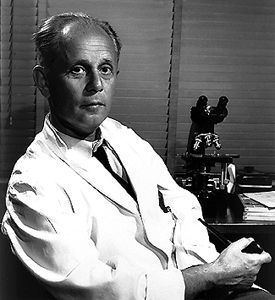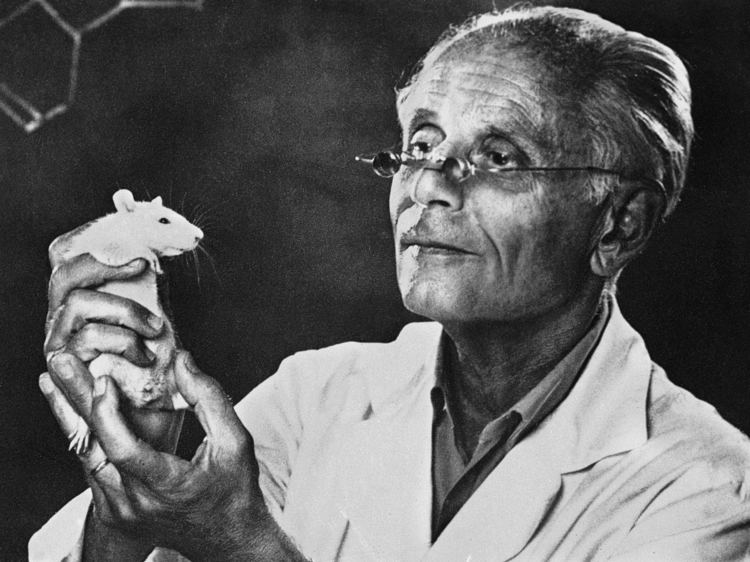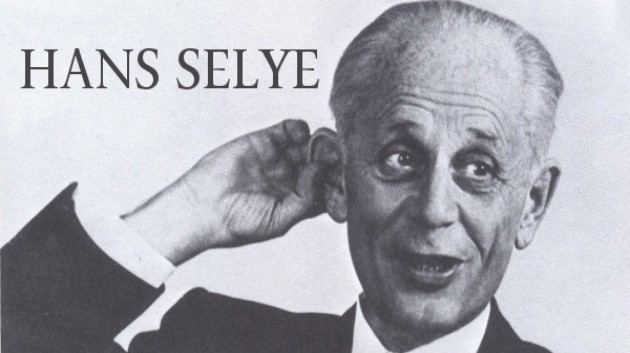Name Hans Selye | ||
 | ||
Other names Selye Janos (Hungarian) Died October 16, 1982, Montreal, Canada Parents Hugo Selye, Maria Felicitas Langbank Books The stress of life, Stress Without Distress, Stress in Health and Disease, Hormones and resistance, The Stress of My Life: A Scientis | ||
Dr hans selye
János Hugo Bruno "Hans" Selye, CC (; Hungarian: Selye János; January 26, 1907 – October 16, 1982), was a pioneering Hungarian-Canadian endocrinologist of Hungarian origin. He conducted much important scientific work on the hypothetical non-specific response of an organism to stressors. Although he did not recognize all of the many aspects of glucocorticoids, Selye was aware of their role in the stress response. Charlotte Gerson considers him the first to demonstrate the existence of biological stress.
Contents
- Dr hans selye
- Hans Selyes General Adaption Syndrome and the HPA Axis Exploring the Connection
- Biography
- Work on stress
- Former graduate students
- Publications
- References

Hans Selye's General Adaption Syndrome and the HPA Axis: Exploring the Connection
Biography

Selye was born in Vienna, Austria-Hungary on 26 January 1907. He grew up in Komárom, Slovakia, and the Selye János University a Hungarian language university in that town bears his name. He became a Doctor of Medicine and Chemistry in Prague in 1929, went to Johns Hopkins University on a Rockefeller Foundation Scholarship in 1931 and then went to McGill University in Montreal where he started researching the issue of stress in 1936. In 1945, he joined the Université de Montréal where he had 40 assistants and worked with 15,000 laboratory animals. Kantha (1992), in a survey of an elite group of scientists who have authored over 1,000 research publications, identified Selye as one who had published 1,700 research papers, 15 monographs, and 7 popular books. He died on 16 October 1982 in Montreal, Quebec, Canada. He was a nominee to the Nobel prize for the first time in 1949. He often visited Hungary, giving lectures as well as interviews in Hungarian television programs. His book "The Stress of Life" appeared in Hungarian as "Az Életünk és a stressz" in 1964 and becoming a bestseller.
Selye was of Austro-Hungarian origin, his father was of Hungarian ethnicity while his mother was Austrian. His father a doctor moved back to Budapest with his Austrian wife. Selye's mother died in 1956 from bullet hits during the revolution. He conducted a lecture in 1973 at the Hungarian Scientific Academy in Hungarian with no accent though he had lived many years abroad.
Work on stress
His last inspiration for general adaptation syndrome (GAS, a theory of stress) came from an endocrinological experiment in which he injected mice with extracts of various organs. He at first believed he had discovered a new hormone, but was proved wrong when every irritating substance he injected produced the same symptoms (swelling of the adrenal cortex, atrophy of the thymus, gastric and duodenal ulcers). This, paired with his observation that people with different diseases exhibit similar symptoms, led to his description of the effects of "noxious agents" as he at first called it. He later coined the term "stress", which has been accepted into the lexicon of most other languages.
Selye has acknowledged the influence of Claude Bernard (who developed the idea of milieu intérieur) and Walter Cannon's "homeostasis". Selye conceptualized the physiology of stress as having two components: a set of responses which he called the "general adaptation syndrome", and the development of a pathological state from ongoing, unrelieved stress.
Selye discovered and documented that stress differs from other physical responses in that stress is stressful whether one receives good or bad news, whether the impulse is positive or negative. He called negative stress "distress" and positive stress "eustress". The system whereby the body copes with stress, the hypothalamic-pituitary-adrenal axis (HPA axis) system, was also first described by Selye. He also pointed to an "alarm state", a "resistance state", and an "exhaustion state", largely referring to glandular states. Later he developed the idea of two "reservoirs" of stress resistance, or alternatively stress energy.
Selye wrote The Stress of Life (1956), From Dream to Discovery: On Being a Scientist (1964) and Stress without Distress (1974). He worked as a professor and director of the Institute of Experimental Medicine and Surgery at the Université de Montréal. In 1975 he created the International Institute of Stress, and in 1979, Dr. Selye and Arthur Antille started the Hans Selye Foundation. Later Selye and eight Nobel laureates founded the Canadian Institute of Stress.
In 1968 he was made a Companion of the Order of Canada. In 1976, he was awarded the Loyola Medal by Concordia University.
In recent years it has emerged that Selye worked as a consultant for the tobacco industry from the 1950s until his death, receiving extensive funding for his research, and taking part in pro-smoking campaigns paid for by the tobacco industry. He also helped RJ Reynolds to recruit other scientists, and there is evidence that industry lawyers helped with the wording and content of some of Selye’s later academic papers. The tobacco industry’s funding of Selye’s research was cited as an example of racketeering in the successful anti-racketeering case brought by the US Department of Justice against 7 tobacco companies in 2009.
